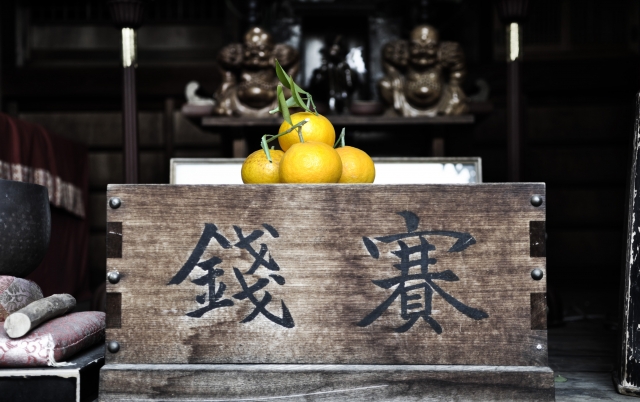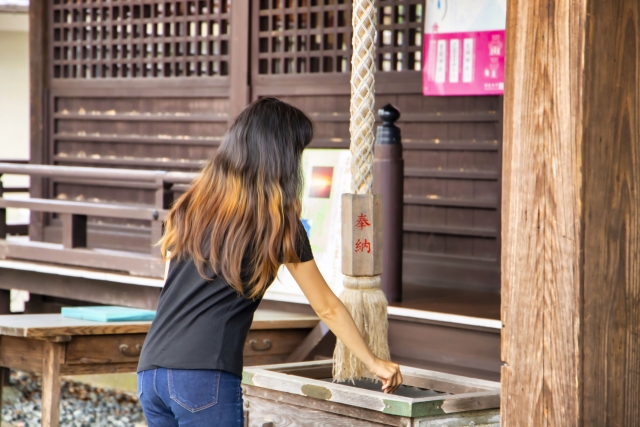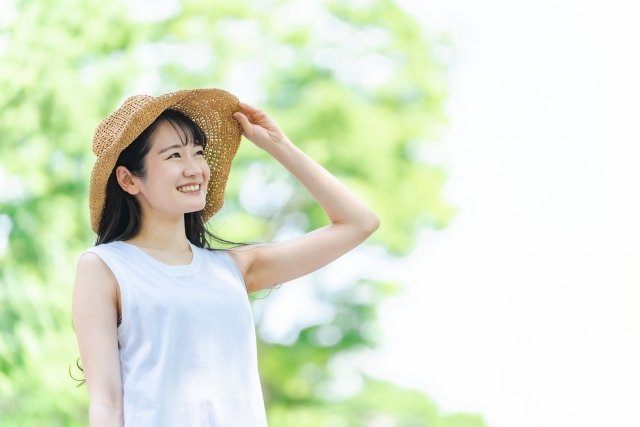When Japanese people go to visit shrines and temples, they first look for money to make a donation. However, if they cannot find coins, they are in trouble. Aside from the wealthy people who have no money problems, it usually takes some courage to put a bill in the money box.
On this page, we will review the meaning of money offering. We will also look at the generally accepted amount of money for a money offering.

Click here to learn Japanese language with the best one-on-one Japanese tutoring lessons in person or online.
Contents
What is the meaning and origin of “osaisen”?
You can see it by looking at the structure of the osaisen box.
O-sai-sen” is money offered when you visit a shrine or temple or when you give thanks.
It is sometimes called sansen 散銭 (sansei さんせん, chirisen ちりせん).
Historically, a box called sanzenbitsu was installed at Tsurugaoka Hachimangu Shrine (Kamakura City, Kanagawa Prefecture) in 1540 during the Muromachi period (1336-1573), and this is believed to be the oldest recorded money offering box in Japan.
From this point on, as visits to Ise became more common, the custom of offering money to the gods developed.
In some areas, rice has long been offered as an offering.
In the old days, people offered rice or grains instead of money as in the case of monetary offerings. Specifically, the following items were offered
- Sammai 散米 さんまい= scattering rice before the gods and Buddha
- Ohineri おひねり = offering of washed rice wrapped in paper
- Five grains 五穀 (gokoku = five kinds of grains) wrapped in paper
In addition, in the fall, the first ears of rice harvested that year have been dedicated to shrines.
This was the origin of the “first ear of rice” to be prayed for and purified at shrines.
As money came into wide circulation, offerings gradually changed as well.
In other words, offerings changed from grains to money, and with the change came the establishment of “Saizen Boxes”.

About the amount of money for monetary offerings
It is often said that “it is not the amount of money that counts” when it comes to the amount of money to be donated.
However, people try to rely on something to “get as much benefit as possible. It can be said that the term “wax money” is a good place to base such a request.
Here, we have compiled a list of words related to the amount of money to be donated.
There are two types of word combinations.” “amount of money” and “number of coins, etc.” but we have chosen them mainly based on the amount of money.
Note that those in red are words with meanings that are considered bad luck.
Amount of money
- 5 : For good luck ご縁がありますように
- 10 : Two 5 yen coins overlapped “for good luck 5円玉2枚で「ご縁」が重なる
- 10 yen => extra yen => distant karma “for bad luch 10円 ⇒ とおえん ⇒遠縁
- 15 : Sufficient karma 十分なご縁
- 25 : Double return 二重のご縁
- 35 : Karma of no recurrence 再三のご縁
- Scattered karma”for bad luch” 散々なご縁
- 45 : Perpetual karma… 始終ご縁
- 55 : Fivefold Karma 五重のご縁
- 105 : ufficient Karma 十分なご縁
- 115 : Good karma いいご縁
Of these, the major one is probably “ご縁がありますように” (good luck) for 5 yen.
Now you know how much to throw into the money box at the shrine. The key is to mix in 5 yen in most cases.
Bon and New Year’s are not the only opportunities to go to a shrine and throw money. You can throw money offerings at any time of the year, so please go and throw them in. When you do, don’t forget to put a five-yen coin in your wallet.

Conclusion
Sai-sen is money offered to shrines and temples. Many shrines and temples have “Sai Sai Boxes,” into which worshippers throw in the required amount of money in return for prayers or the fulfillment of wishes. A similar term is “kisai,” which means “giving money to the temple, shrine, or person in need. This means to give money willingly to a temple or shrine or to a person in need, and does not necessarily mean to put the money in the donation box.
- O-sai-sen is money offered at shrines and temples when praying or giving thanks, and is also called san-sen (san-sen, chirisen).
- Before the custom of offering money became common, rice and grains were offered to the gods and Buddha.
- As money became widely circulated, offerings changed from grain to money, and money offering boxes were established.
Related article:










